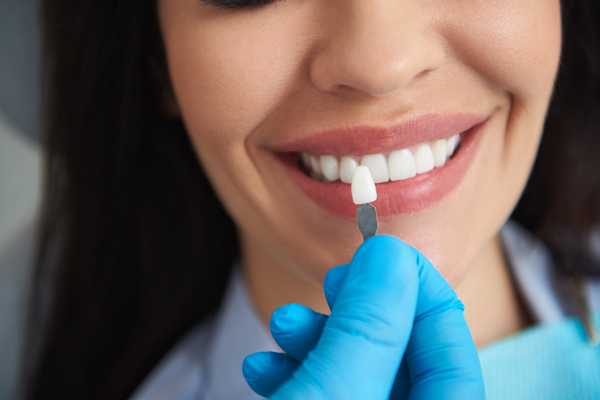Important Services for Gum Health – Periodontics

How often do you consider your gum health? Most people will assume that their gums are healthy and will focus on more pressing dental problems. However, your gum health may affect the rest of your oral health.
Periodontics and treating gum disease
If a patient presents with gum disease, the treatment will depend on several factors. These include the patient’s health history and the stage of the gum disease. The dentist or periodontist will recommend treatment options for maintaining gum health.
Good oral hygiene routine to promote gum health
The first step that a patient can do to promote gum health is to practice a good oral hygiene routine. A dentist will recommend brushing the teeth at least twice a day. It is also important to floss daily. Sometimes, a dentist will recommend the use of mouthwash.
Professional cleanings
It is essential that people visit the dentist at least twice a year. For some, a dentist may recommend for them to come in more often depending on the health of the teeth and gums. When a patient has gingivitis, a professional cleaning from a dental team is important. The dental team can also give the patient some good advice and tips on how to keep the gums and teeth healthier at home.
Deep cleaning
If the patient’s gum disease has advanced beyond gingivitis, the next step in treating the gum disease is a thorough deep cleaning called scaling and root planing. This deep cleaning may happen once or over several visits, depending on the personal needs of the patient.
Scaling is when the dentist removes the plaque and tartar from above and beneath the gumline. The dentist cleans out each periodontal pocket. Root planing involves the dentist smoothing out the root surfaces of the teeth. This will allow the gum tissue to heal and reattach to the patient’s teeth.
Periodontal surgery
In some cases, scaling and root planing is not sufficient for treating the gum disease. If the pockets do not completely heal after the scaling and the root planing has been performed, the dentist may recommend gum surgery.
Surgery will allow the dentist to remove plaque and tartar from the harder to reach spaces. The gums will be stitched back in place afterward, so they press tightly against the patient’s teeth. This will prevent new plaque and tartar from getting into the pockets. Surgery can also help shrink the depth of the pockets and make it easier for the patient to keep the teeth and gums clean.
Gum disease does not go away on its own
Once the patient’s dental team has addressed the gum disease, it is important that the patient continue to receive dental care consistently. The frequent cleanings the dentist may recommend after treatment are referred to as periodontal maintenance care. The consistent cleanings will be more in-depth than the usual professional cleanings and will promote gum health.
Plan more visits to the dentist
If you have gum disease, you are going to need to see the dentist more frequently than before. The pockets and other issues caused by your gum disease can make it harder for you to clean the plaque off your teeth. You can discuss a treatment plan with your dentist. It is important that you follow whatever maintenance recommendations the dentist makes for your gums to become healthier.
Request an appointment here: https://www.palmbeachdentistry.com or call Palm Beach Dentistry at (561) 225-2057 for an appointment in our Delray Beach office.
Check out what others are saying about our services on Yelp: Read our Yelp reviews.
Recent Posts
Cosmetic dental treatments can bring you closer to the smile of your dreams. The main focus of these services is to enhance the appearance of the smile, which in turn boosts confidence. They can even make oral hygiene and care easier, although that is not the primary purpose. Knowing when it is time to consult…
Worried about receding gums? Read on to learn about how to prevent this condition. Receding gums can put the long-term health of teeth at risk. The good news is that mouthwash, along with other at-home oral care routines and regular cleaning and check-up visits with your dentist, can significantly reduce the risk of periodontal (gum)…
One essential step a person can take to prevent receding gums is to maintain excellent dental hygiene. Most individuals often neglect their gums and focus on dazzling, pearly white teeth when it comes to oral health. However, having healthy gums is just as important as having healthy teeth.Gum recession has the potential to cause tooth…
Receding gums can be a sign that you have gum disease. It can also be a sign of poor brushing habits or using a toothbrush that is too hard. receding gums leave teeth roots exposed to acids made by oral bacteria, increasing their risk of decay.Teeth roots do not have an outer layer of enamel…


